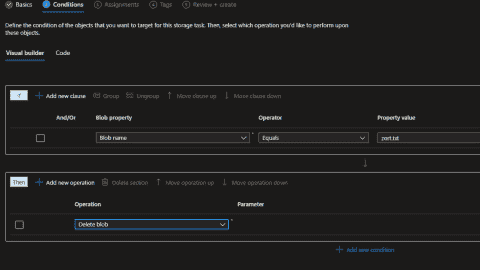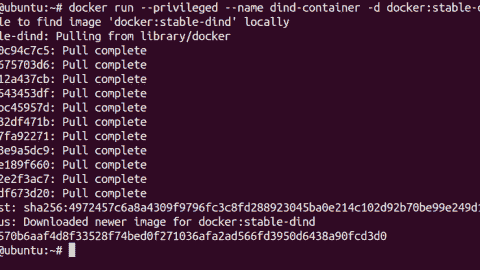- How to use VMware vSAN ReadyNode Configurator - Fri, Dec 17 2021
- VMware Tanzu Kubernetes Toolkit version 1.3 new features - Fri, Dec 10 2021
- Disaster recovery strategies for vCenter Server appliance VM - Fri, Nov 26 2021
All VMware Hyperconverged Infrastructure (HCI) offerings have vSphere and vSAN as storage, so vSAN is crucial to VMware and represents a key storage element.
VMware tightly integrates vSAN into vSphere and ESXi. This release also adds some new services, such as native file services.
The information we have comes from a blogger's briefing during the prerelease phase.
Simpler lifecycle management
Native to vSphere, a new desired-state model monitors compliance drift from a template. Admins will be able to apply a patch or upgrade to keep the infrastructure up to date via a new tool, which replaces vSphere Update Manager (VUM).
vSphere Lifecycle Manager (VLM) replaces VUM. Image management enhances VLM, which works pretty much the same as VUM.
It makes sense to have per-cluster settings because we configure VMware vSAN per cluster, and it uses similar or the same hardware across its clusters. We can now control the firmware and driver combination on every node in the cluster at the cluster level.
Cluster image management
The cluster image is a new construct comprising firmware, drivers, vendor add-ons, and the ESXi image build version. The key here is the "desired state" model.
The image below from VMware shows the details.
Some requirements:
- All hosts must run ESXi 7.0.
- All hosts must run the same hardware type; it will push drivers and firmware incorporated into the image to all ESXi hosts.
So now after you set the drivers, firmware, and ESXi image, you can remediate all noncompliant hosts.
Compared to vSphere Update Manager (VUM) in previous releases where you only managed ESXi images, vSphere 7's image management includes drivers and firmware versions. This is essential for VMware vSAN.
Features:
- Management of host firmware from vSphere
- Works in conjunction with vendor management tools like Dell OpenManage or HPE OneView
- The VMware Compatibility Guide (VCG), Hardware Compatibility List (HCL), and recommendation engine allow you to remove the risk of unsupported drivers and firmware completely
- A full graphical user interface (GUI) and representational state transfer (REST) application programming interface (API) are available
Native file services
VMware vSAN 7.0 will have fully integrated file services with support for NFS v3 and v4.1. You can add the file services as additional storage space usable for applications. You can have virtual machines (VMs) as well as cloud-native applications needing persistent volumes running side by side on the same vSAN cluster.
The admin can provision vSAN cluster capacity and create file shares with quotas and other elements directly within the vSphere Web Client. There is no need to go out to the filer and do this operation outside vSphere.
However, vSphere file services are no replacement to your traditional large-scale filers, so you might use these side by side.
This is a cluster-level file service within VMware vSphere. It will align with the current management capabilities of vSAN and provide a better set of features for datacenter admins.
The new assistant for configuring file services looks like this (within the vSphere 7 Beta):
Enhanced cloud-native storage
Within a vSAN environment, there will be file-based persistent volumes on vSAN. Admins will be able to integrate storage classes associated with pods and see how these relate to the assigned storage policies.
So during initial provisioning of containers with apps, you'll be able to use automated placement based on storage policies.
vSphere 7 will also support encryption and snapshots, volume resizing, and a mix of tools, such as Wavefront, Prometheus, and vRealize Operations (vROps).
VMware vSAN simplified configuration
In previous releases of vSAN for two-node clusters, admins had to go to the command-line interface (CLI) and set a default getaway for hosts that were part of vSAN. The new vSAN 7.0 will have an option within the configuration GUI to set different default gateways.
The cluster configuration with routed topologies will be easier for admins, even though the one or two commands necessary to set a static route weren't that difficult. However, the GUI will provide a way to see this configuration now, which wasn't the case before.
Placement intelligence for VMs running in stretched cluster environment
VMware Distributed Resource Scheduler (DRS) and vSAN are the best for VMs running in this topology when you have an outage on one site and there is, for example, a link failure. VMware High Availability (HA) will restart your VMs at the preferred site.
However, when the link came back, DRS will first let the resync between sites finish before trying to rebalance the VMs to enable equal loads on both sites. So VMware has added some new intelligence here.
This will reduce intersite link traffic. Previously, it all happened at the same time, so you had DRS traffic and intersite link traffic.
VMware also improved capacity management for stretched clusters, so you can now have site capacity management.
We have not talked about more added features here because we will first need to test these features in our lab and will report on that afterward.
Final words
VMware vSphere 7 and vSAN 7 is an evolution of an already mature product. It offers smooth improvements with some nice additions for file services, stretched clusters, and intelligent operations.
As they add more and more services, they can cover more use cases. Previously, one had to rely on external file services, while with vSphere 7, admins will be able to provide file services to modern applications from within the vSphere GUI. It is not a revolution, but it will be more convenient.
Subscribe to 4sysops newsletter!
The firmware and driver management on a per-cluster basis for vSAN configurations will definitely ease some pain that previous releases struggled with, and many manual actions and verifications had to occur on a per-host level. With the new vSphere 7 cluster image management, we can push the same configuration to all hosts part of the vSAN cluster, thus maintaining the same level of firmware/driver combinations.
IT Administration News
- Google unveils Veo, a high-definition AI video generator that may rival Sora | Ars Technica
- OpenAI created a team to control ‘superintelligent’ AI then let it wither, source says | TechCrunch
- Microsoft to start enforcing Azure multi-factor authentication in July
- Linux maintainers were infected for 2 years by SSH-dwelling backdoor with huge reach | Ars Technica
- Microsoft aware of Windows Server KB5037765 0x800f0982 error
Join our IT community and read articles without ads!
Do you want to write for 4sysops? We are looking for new authors.









-480x270.png)






















Very informative article, thanks for sharing.